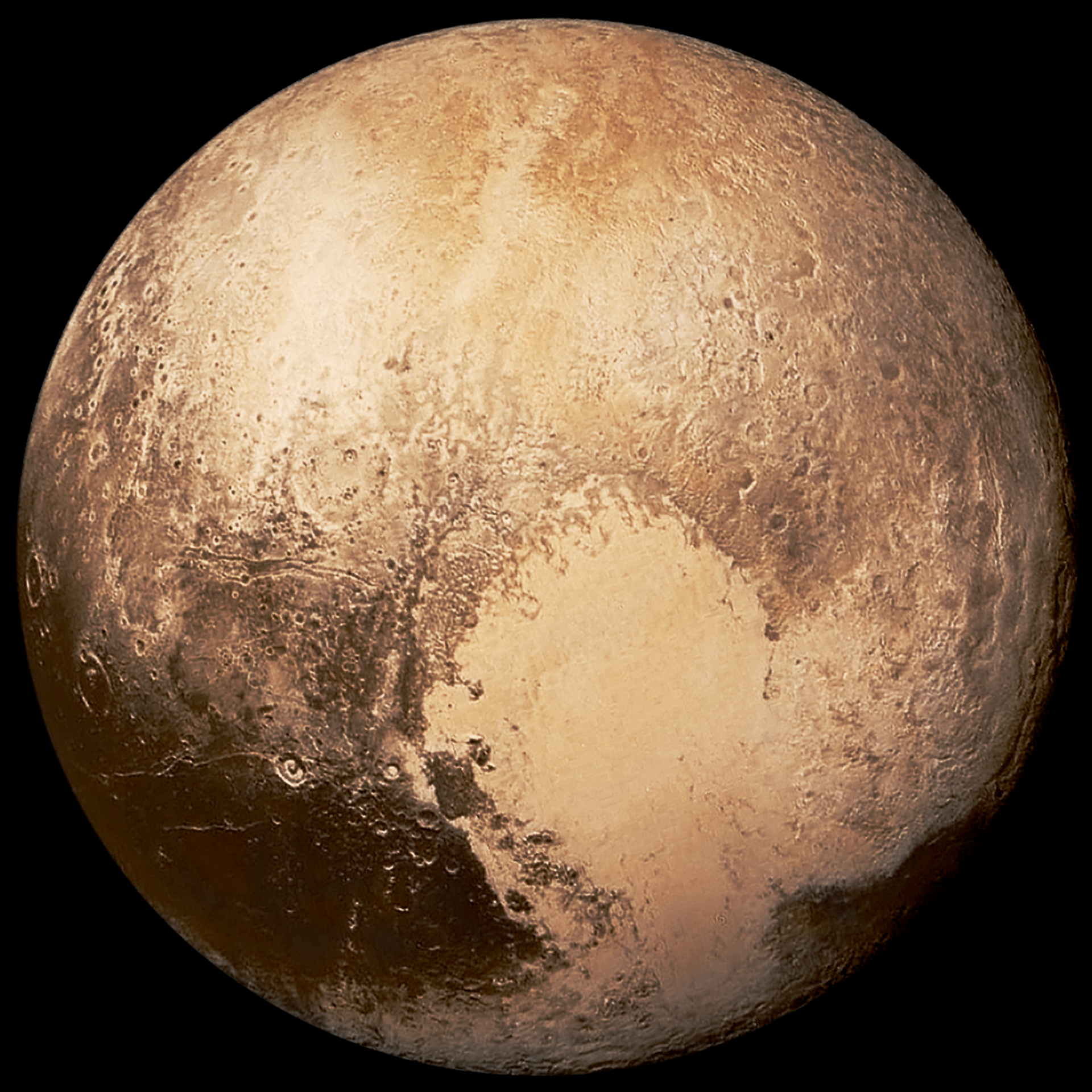Pluto Ending Explained - Unraveling The Finale
For anyone who made it to the very end of Netflix's "Pluto," you probably found yourself with a few questions, so, very likely, you are not alone. The story reaches a rather intense point where the fate of a whole nation hangs in the balance, and the consequences of past events come crashing down. This tale, you know, wraps up with a truly emotional punch, bringing together big ideas about revenge, finding a way to make things right, and the heavy costs of conflict. It's a conclusion that sticks with you, really, prompting a lot of thought about what it means to be alive and what it means to be a machine.
The animated series, you see, draws its core from a much-loved Japanese comic book series, one that was put together and drawn by Naoki Urasawa. This comic itself, in a way, is a fresh take on a classic story from Osamu Tezuka's "Astro Boy" series, specifically the part called "The Greatest Robot on Earth." In this new animated version, a robot police investigator, whose journey we follow, gets caught up in a series of events that shape the final moments of the world he knows. It's a story that, pretty much, builds up to a dramatic finish, leaving viewers to ponder many things.
The tale of "Pluto" unfolds in a future setting where robots and people, believe it or not, share many feelings and ways of acting, something you can tell from all the robot characters we meet. This idea of shared emotions is a pretty central piece of the whole story, making the ending, you know, even more impactful as it explores the boundaries between artificial life and human experience. The way it all wraps up, for instance, touches on these deep connections, showing how intertwined the lives of robots and humans can become, especially when facing extreme situations.
- Olivia Moore Nsfw
- Lauren London In Bikini
- Carnival 4 Day Cruise From Galveston
- Jamal Murray Kids
- Noah Tomlin
Table of Contents
- What Really Happened at the End of Pluto?
- Where Did Pluto's Story Come From?
- Was Pluto's Ending Predictable, Really?
- Unanswered Questions About the Pluto Ending?
What Really Happened at the End of Pluto?
As the story of "Pluto" draws to a close, a very significant event takes place involving Professor Abullah. He manages to let loose the Bora robot, a creation designed to carry out his ultimate scheme. This scheme involves, quite simply, the complete obliteration of the United States of Thracia. The Bora robot, it turns out, is equipped with a very powerful antiproton bomb. This device is set free beneath the ground, directly under Thracia, in a spot where a volcano, currently not active, would be set off. The aim, in a way, is to bring about the entire destruction of the area, causing a massive catastrophe. It's a plan that, you know, shows the extreme lengths some characters will go to achieve their goals, leaving a lasting mark on the landscape and the lives of those within it.
The Bora Robot's Grand Plan - Pluto Ending Explained
The Bora robot's role in the conclusion is, in some respects, quite central to the unfolding disaster. Professor Abullah's final design for this machine was to use it as a tool for total annihilation. The method chosen for this widespread damage involved, as a matter of fact, triggering a dormant volcano, using the immense force of an antiproton bomb. This bomb, you see, was released deep within the earth's crust, right below the nation of Thracia, a place chosen for its geological features that would, basically, amplify the effect of the weapon. The idea was to create a chain reaction, leading to a natural disaster of unbelievable scale, wiping out everything above. This particular detail, you know, highlights the chilling precision of the plan, making the stakes incredibly high for everyone involved as the series reaches its final moments.
Atom's Troubling Transformation - Pluto Ending Explained
Even though Atom, a key figure, was brought back, the alterations he had gone through were so deep that Professor Ochanomizu started to wonder if he had made the right choice in asking for Dr. Tenma's help. This new version of Atom, for instance, appeared quite detached, and perhaps even more worrying, it had begun writing odd equations on the wall. This behavior, you know, raised serious questions about his state of mind and his very being. The professor's doubts, in a way, reflect the moral quandaries presented by the story, as the characters grapple with the consequences of playing with life and consciousness. It shows, too, the weight of the decisions made by those who create advanced beings, and the unexpected paths those creations might take, leaving a sense of unease about Atom's true nature as the story comes to a close.
- Mcdonalds Free Cheeseburgers
- El Paso Franklin High School Shooting
- Mothers Day Mother In Law
- Martha Stewart Home Decor Deals
- Ingi 90 Day
Where Did Pluto's Story Come From?
The series, as a matter of fact, draws its narrative roots from a well-known Japanese comic book series, which was both written and illustrated by Naoki Urasawa. This particular comic, in a way, is a fresh interpretation of "The Greatest Robot on Earth," a famous story arc from Osamu Tezuka's "Astro Boy" comic series. In this animated telling, a robot police detective, whose path we follow, is central to the unfolding events. Naoki Urasawa, whom you might know as the creator of "Monster," took this specific part from Osamu Tezuka's "Astro Boy" and gave it a new life, creating "Pluto." The name "Pluto" itself, you see, comes from the main bad guy in that original story arc, establishing a direct connection to its classic origins. This link to such an iconic piece of work, you know, gives the "Pluto" series a rich background, building upon a legacy of robot tales while adding new layers of meaning and feeling.
From Classic Manga to New Anime - Pluto Ending Explained
The journey of "Pluto" from its printed pages to the animated screen is, in some respects, a fascinating one. Naoki Urasawa's comic series, which serves as the direct basis for the animation, was itself built upon the foundations laid by Osamu Tezuka, the mind behind "Astro Boy." Urasawa's take, it is said, added more depth and different points of view to the original material. This process of reinterpretation is, you know, one of the notable things that makes a piece of art stand the test of time, allowing it to stay relevant through various periods. The way the "Pluto" anime adapts this, pretty much, shows how a classic story can be re-imagined while still keeping its core ideas, making it accessible and thought-provoking for new audiences. It's a testament to the enduring power of these robot narratives, and how they can continue to evolve and speak to different generations about what it means to be alive, and what it means to be a machine.
Was Pluto's Ending Predictable, Really?
Some people, you know, have expressed the feeling that "Pluto" might be getting a bit too much praise right now. From their point of view, another work, "Monster," was, basically, better by a lot. These individuals found "Pluto" to be just too easy to guess and, in a way, a bit thin. This idea of predictability, for instance, is a common point of discussion when stories wrap up, as viewers reflect on whether the narrative kept them guessing or if the path was clear from the start. It suggests that for some, the conclusion of "Pluto" did not offer the surprises or the depth they had hoped for, leading them to compare it unfavorably to other works by the same creator. This difference in opinion, you see, highlights how varied people's experiences with a story can be, and how personal expectations shape their final thoughts on a series' resolution.
Different Views on the Story's Conclusion - Pluto Ending Explained
The reception of "Pluto's" ending has, in some respects, been quite varied, with some viewers finding it less compelling than others. The notion that it was, perhaps, a little too straightforward or lacked a certain richness is a perspective held by some who watched it all the way through. They might feel that the story's final moments did not quite deliver the unexpected turns or the profound insights that they look for in a narrative. This kind of feedback, you know, is pretty common when a much-anticipated series reaches its conclusion, as different people bring their own hopes and prior experiences to the viewing. It shows that even a critically well-regarded work can have aspects that do not resonate with everyone, leading to a range of thoughts on how well the story tied up its loose ends and delivered its ultimate message. The debate around its predictability, for instance, speaks to the differing tastes and preferences among those who engage with the story's final act.
Unanswered Questions About the Pluto Ending?
After finishing "Pluto," some viewers, you know, found themselves with a few plot elements that did not seem to have a clear explanation. For example, a big question was how Brau 1589 managed to get away. Another point of confusion was why it chose to harm the teddy bear machine. There was also curiosity about what Atom's request for Brau actually involved. And, you know, people wondered where Professor Abullah's artificial intelligence went, and if it was put into Bora. These lingering questions, in a way, suggest that the ending, for some, left certain threads untied, prompting discussions and speculation among those who followed the story closely. It's pretty common for complex narratives to have elements that remain open to interpretation, but for some, these specific points felt like gaps in the story's final explanation, leaving them wanting more clarity about these particular plot developments.
Mysteries Left Hanging - Pluto Ending Explained
The conclusion of "Pluto" did, as a matter of fact, leave some viewers pondering certain details that were not fully spelled out. The mysterious way Brau 1589 escaped, for instance, was a point of interest, along with the reasons behind its actions concerning the teddy bear machine. People also wanted to know the specifics of Atom's appeal to Brau, and the ultimate fate of Abullah's artificial intelligence, particularly whether it found a new home within Bora. These are, you know, some of the specific narrative pieces that, for some, did not receive a complete resolution by the time the credits rolled. The series, it turns out, also features the seven most advanced robots in the world being destroyed one by one by a hidden force, and they are found with horns placed on their heads, looking like the Roman god of the dead, Pluto. This particular detail, pretty much, is not explained in the Netflix series until the very end, adding to the layers of mystery that unfold throughout the story. The host and an analyst, for example, often review the final part of "Pluto," talking specifically about how it all wraps up, trying to make sense of these unresolved points. This kind of discussion, you know, shows that the ending, while providing closure on the main plot, still leaves room for continued thought and conversation about its more enigmatic elements.
- Alvarez Funeral Home Chicago
- Dance Of Life Dancer
- Mcdonalds Free Cheeseburgers
- Crumbl Mini Vs Regular Size
- Coachella Top

Pluto in High Resolution | NASA Solar System Exploration

Pluto

New High-Res picture of Pluto from NASA : pics